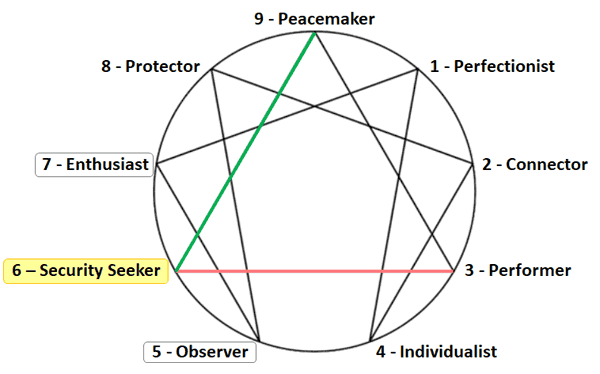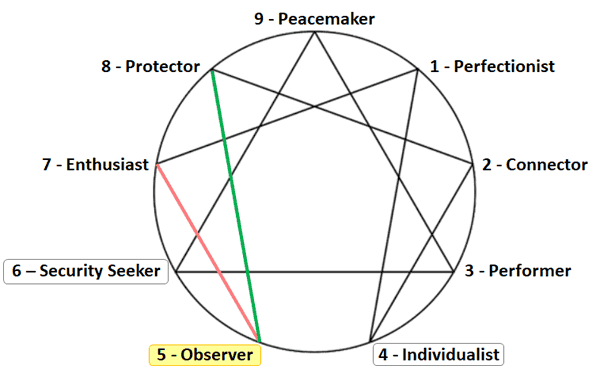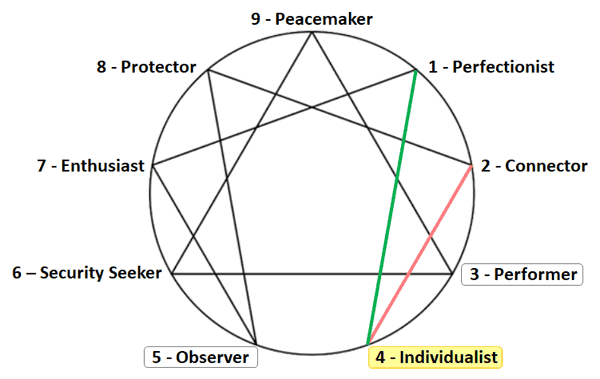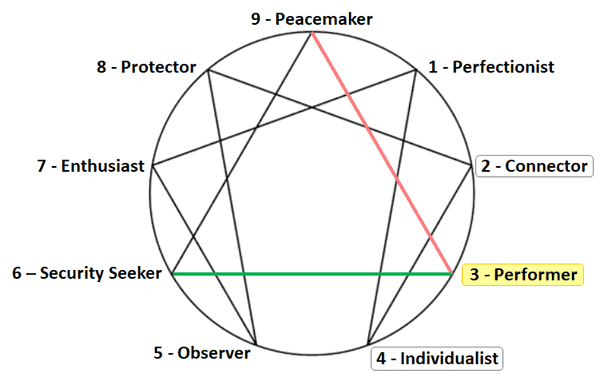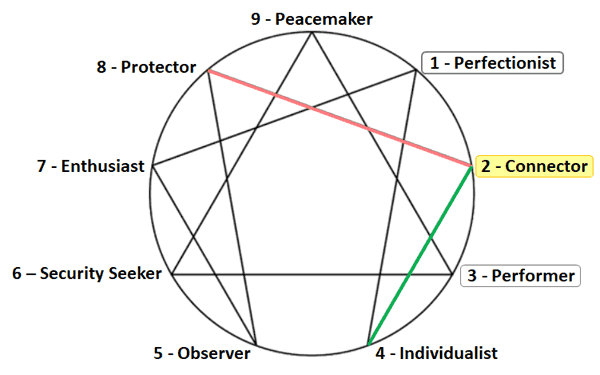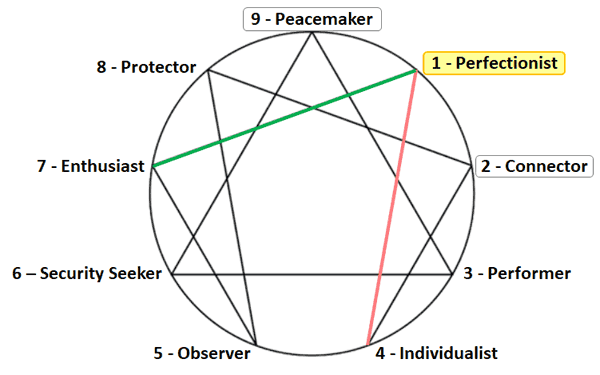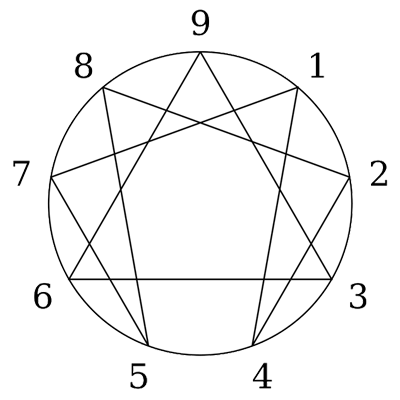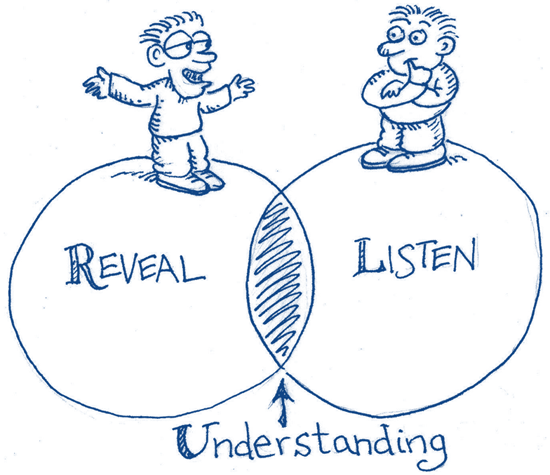The Enneagram Type SIX personality finds the world hazardous and unpredictable and expends a good deal of energy building defenses. This type is future-oriented, constantly on the lookout for danger. They want to know what is trustworthy and where they might find safety. They carefully scrutinize outside input in the process of discerning to whom or what they should be loyal.
SIXES repress their intuition; they cut themselves off from what they know instinctively. They go into their heads and spin on the data they collect. This gluttony of ideas can create analysis paralysis. While a trustworthy authority might break the cycle, they often harbor suspicion toward the ones they encounter in real life. Their quest for certainty creates more uncertainty.
SIXES wrestle with projection. They’d rather imagine others’ motivations than wallow in not knowing. This predilection may engage quickly and trend toward negative expectations. (“If I can anticipate the worst that may come at me, I can prepare for it.”) It’s a refusal to stay in uncertainty.
Phobic SIXES overcome uncertainty by trying to make their lives safe, secure, and predictable. They may present themselves as small, meek, and powerless to get others to protect them. Or, they may assuage their fear by adopting conservative patterns of behavior. They defer decisions until they’ve researched matters thoroughly and developed considered opinions on the opportunities, risks, and rewards. They anticipate the worst and develop contingency plans. Counterphobic SIXES push against fear and move toward perceived threats (often aggressively) to test their mettle. They deal with anxiety by denying it or putting it in the background. They align themselves with sources of power to stand clear of blame should things go awry.
SIXES make people uncomfortable because they tell them the truth and make them face it – that is, life is uncertain, and we need to be careful. They point to a precariousness that we would rather not acknowledge. They tell us that any expression of certainty is false. SIXES are willing to sit in a doubting place and force our discomfort because it is the right thing to do.
SIXES earn predictability and safety through loyalty. They are devoted companions who expect trusted associates to be loyal to the people, things, and organizations to which they are loyal and hostile to their perceived antagonists. They have a special affinity for the downtrodden with whom they share an identity of being underdogs. When SIXES find organizations, leaders, systems, and structures that align with their sensibilities, they are committed and hardworking. However, when trust has been called into question, they’re out.
SIXES sit between the influence of a FIVE that argues for doing nothing to conserve energy and the SEVEN that is always ready to explore new opportunities. Healthy SIXES leverages the FIVE capacity for subject matter expertise that empowers them to take action based on their own hard-won knowledge. They let the SEVEN zeal for life propel them toward opportunities for which they might otherwise miss out.
SIXES are also influenced by their dominant instinct:
- Self-Preservation SIXES generally adopt a strategy of being small, careful, and compliant. While they make friends slowly, they are warm, friendly, upbeat, and trustworthy when on solid ground. As colleagues, they are competent, reliable, and loyal. They have a tendency to sweat the small stuff and take their time when making decisions.
- One-to-One SIXES work on their physical strength, power, and/or attractiveness to feel safe. If counterphobic, they mask their insecurities by projecting toughness; if phobic, they’ll leverage flirtation, coquettishness, and seduction to secure powerful allies.
- Social SIXES put their faith in organizations (e.g., union member) and/or systems, and expect them to take care of them. They like being part of something that is greater than themselves and can feel anxiety in the face of disharmony within the collective.
Under stress, SIXES may adopt characteristics of an Unhealthy THREE. Fear and anxiety drive them to work harder to avoid criticism or simply triumph over others. It also causes them to worry about their public image and push hard to be accepted. The latter can come off as forced friendliness and may be off-putting.
The antidote to stress lies in developing the capacity to see the world as fundamentally benevolent and supportive. From this vantage point, SIXES can relax into their daily routines and encounter new persons and experiences from a position of openness. They can also learn to trust their instincts rather than assume that everyone and everything may pose a threat. This trust gives them the freedom to live in the moment without undue concern for the future.
SIXES find strength in movement toward a Healthy NINE. This position allows them to feel grounded in the here and now rather than worried about the future. They’ll stop agonizing over choices and realize that several options can deliver a good result. They’ll learn to feel secure in and of themselves without concern for validation by their colleagues and significant others. They’ll also feel inclusive and accepting of others, not threatened by them.
